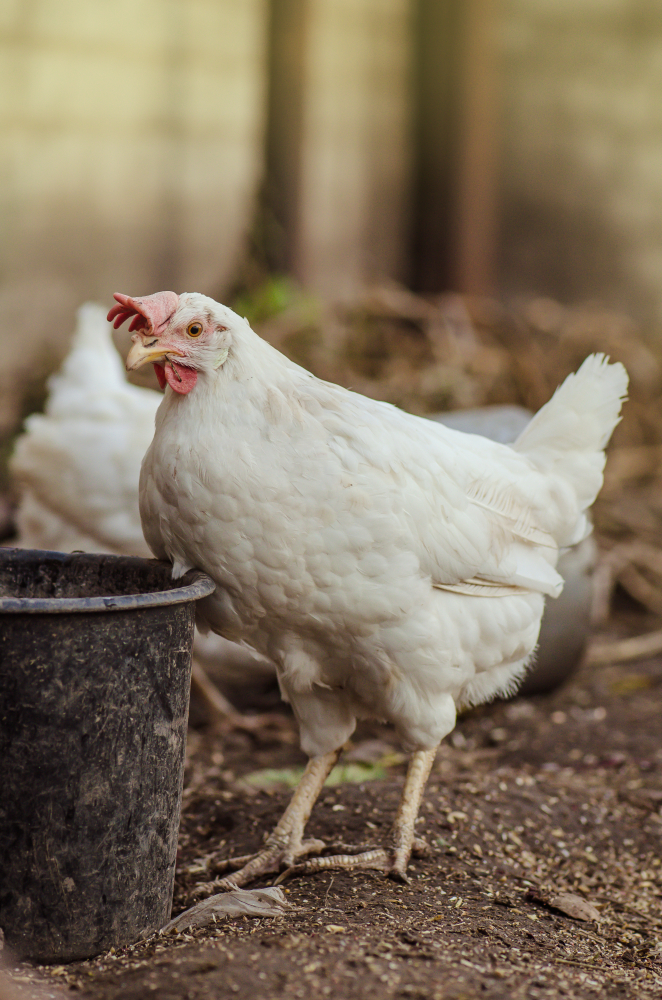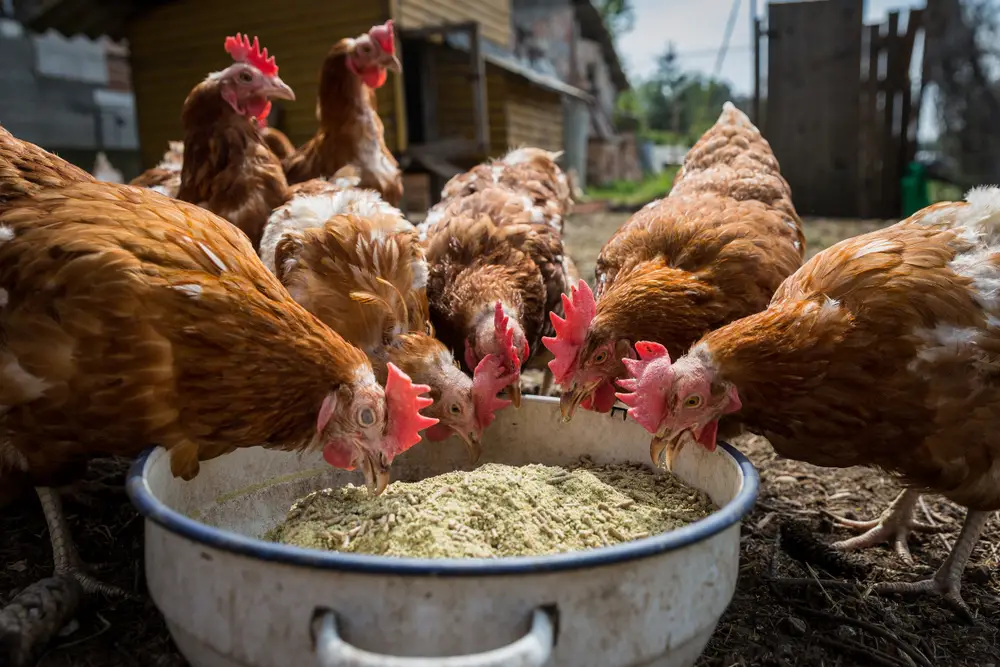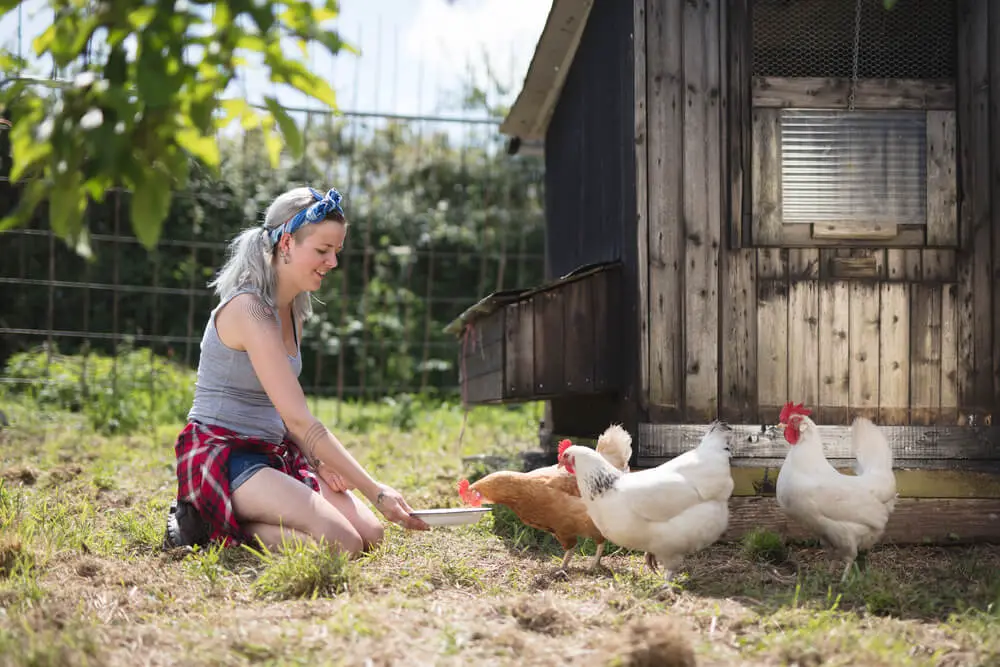The process of feeding them is also very simple. All you have to do is go to the local feed store and get a bag of chicken feed formulated for the type and age group of chicken you are raising. You will discover that there are specific feed formulations for layers, broilers (meat birds), chicks, growers, and show birds. As a backyard chicken raiser, you have certain flexibility in regards to what you will feed your chickens.

Feeds are available to suit the changing needs of the chickens. Chicks can be fed a “starter” mix until they are feathered out. Then they can be fed “maintenance” feed until they start laying eggs. Layers can be fed “egg booster” and “scratch”.
Feed comes in three forms:
- Mash – It is powdery, just like it sounds. It is wasteful because chickens kick it around. This is recommended for hens.
- Pellets – They are made of compressed mash. They are recommended for older birds. Chickens can still pick them up even after they are kicked out of the feeders. In the pellet-making process, the mash is treated with steam and then passed through a suitably-sized dye under pressure. The pellets are then cooled quickly and dried by means of a forced air draft.
- Crumbles – They are broken pellets. These are recommended for the chicks.
What a chicken raiser should always bear in mind is the importance of water in the lives of chickens. A chicken’s body is more than fifty percent water. It is very important to always provide water to your chickens.
Too little water results in dehydration, stress and a decline in egg production. When deprived of water for 24 hours, chickens will need 24 more hours to recover completely.
Chicks will require around a gallon of water per 100. Mature birds need about 1 to 2 cups of water a day. Laying chickens need more water than non-laying ones. Hot weather will necessitate the intake of more water. Water should be clean, fresh, and available at all times.

Chickens must be given feed that contain the following:
- Grains – Whole, living grains are always better than cracked grains. As much as possible, chickens should be given a mixture of grains.
- Greens – Chickens should get grass, weeds, and fresh vegetable parings from the kitchen.
- Protein – Chickens get enough bugs during the summer, but they need protein supplement like soybeans, worms, milk and meat during the winter.
- Hard grit – This is quartz-based sand with angular edges (not rounded like that found in riverbeds). This takes the place of teeth.
- Calcium – There is a lot of calcium in greens if the chickens can forage all day. Supplements can be obtained from crushed oyster shells, various other shells and from ground or hammered bone.
- Vitamins A and D
- Salt – It is best given separately. Kelp is the supreme choice for this.
Prepared Feeds
Poultry feed is referred to as “complete” feed because it is designed to contain all the protein, energy, vitamins, minerals, and other nutrients necessary for proper growth, egg production and health of the chickens. Feeding any other ingredients mixed in with the feed, or food given separately might disturb the balance of nutrients in the “complete” feed. Therefore, giving additional grain or supplements with the complete poultry feed is not recommended.

Chicks must be fed a “starter” diet soon after hatching. Starter feed must continue until they reach 6 or 8 weeks of age. The starter diet has the highest level of protein a chicken receives during its lifetime. As the chick matures, it requires a lower amount of dietary protein and develops a higher level of energy.
At 8 weeks of age the chicks should be fed a “finisher” diet if they are intended to be broilers. Broilers must be fed a finisher diet until they are ready for slaughter. Pullets must be fed a “developer” diet until they are at least 20 weeks old. At the start of egg production, they should be fed a “layer” ration until the end of the egg production.
Chickens have gizzards instead of teeth to grind food. In order to grind the food, gizzards use grit—-pebbles and other indigestible objects—-they pick up while foraging. Indoor chickens should be provided grits.

Shannon Stansberry has been engaged in the business of raising chickens for more than 12 years. In 2016, she accomplished the Agriculture & Natural Resources program at Mt. San Antonio College. At present, she tends to more than 80 chickens on her 4-hectare farm. Shannon regularly shares her insights and experience on how to raise healthy and contented chickens on the platform Typesofchickens.com